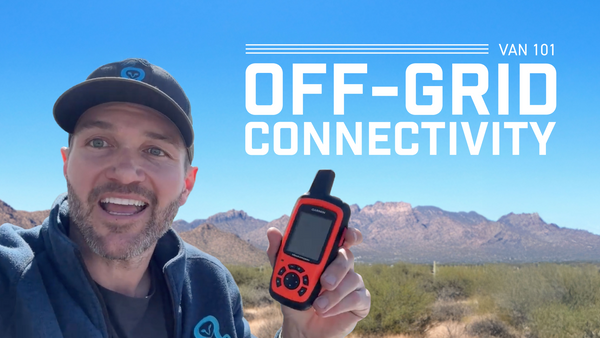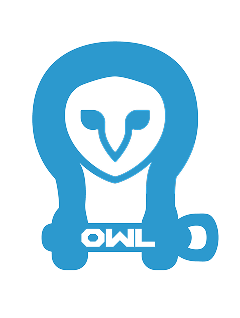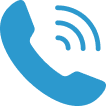The Owl Journal Filter
Staying Safe & Connected: The Best Off-Grid Tech for Adventure Vans
If you’re serious about adventure travel—exploring remote trails, discovering new camp spots, or working from your van in the wild—reliable connectivity can be a game-changer. Whether it’s keeping in touch with family, coordinating logistics, or enabling emergency access, staying connected is as essential as your tires or suspension. Let’s break down the best off-grid communication solutions for van lifers, overlanders, and anyone who seeks true adventure, using the technical insights and field-tested advice from Owl experts.
Why Off-Grid Connectivity Matters for Van Life and Overlanding
For those pushing boundaries off the beaten path, lacking a connection isn’t just about missing a social update—it’s about safety, logistics, and maximizing your adventures. Here are the core reasons off-grid connectivity should be a top priority for every serious van owner:
-
Emergency Access: When something goes sideways, you want more than just hope for a passing traveler. Satellite-enabled devices are the true lifelines in dead zones.
-
Work-Life Balance: Zoom calls, responding to urgent emails, or Facetiming family from the backcountry—off-grid internet lets you work remotely without compromise.
-
Navigation & Information: Updating maps on the fly, finding new routes, or researching repairs when the unexpected happens—connectivity makes you more self-reliant.
-
Peace of Mind: Even hardcore off-roaders appreciate the ability to check in with loved ones when circumstances demand.
It’s not about being tethered to civilization; it’s about autonomy, resilience, and preparedness.
Key Off-Grid Connectivity Solutions: Pros, Cons, and Field Notes
Let’s get straight to the tech that’s redefining the off-road experience in the real world. We’ve field-tested each method—here’s what delivers, and for whom.
1. Apple iPhone 14+ Satellite Emergency (for iOS users)
Best for: Lightweight, built-in emergency backup
How it works: iPhone 14 and newer can link directly to satellites for emergency messaging when outside cell coverage—no big antenna needed.
Highlights:
-
Integrated into your iPhone (no extra device)
-
Easy interface; uses your body as antenna for a connection
-
Free for first two years (Apple then charges)
-
Limitations: Emergency use only—no web browsing or calls
Owl's Insight: This is a solid safety net, but not a work or entertainment solution.
2. Garmin inReach (Satellite Messenger)
Best for: Text-based emergency and location check-ins, lightweight expeditions
How it works: Compact, rugged device with a stubby antenna links to global satellite networks for texting regardless of cell signal.
Pros:
-
True global coverage—works anywhere with sky visibility
-
Text communication (not voice or full internet)
-
Breadcrumbs, mapping, topography for hikes or missions
-
Relatively affordable hardware and subscriptions (around $15–$20/month)
Cons:
-
No voice—or internet—just messaging
-
Subscription required
Owl's Insight: The Garmin inReach is ideal for trail scouting and solo explorers—dependable and light.
3. Garmin Tread (All-in-One Off-Road Navigator + Satellite Comms)
Best for: Full-featured navigation with built-in satellite SOS
How it works: 11" touchscreen combines advanced off-road maps, topographical navigation, and the satellite communication of inReach in a single rugged unit.
Pros:
-
Built-in satellite texting/SOS plus robust GPS navigation
-
Off-road trail databases, topographies, and campsite info
-
Excellent for multi-vehicle caravans or complex trail networks
Cons:
-
Higher upfront cost
-
Not a full web connection; texting only
Owl's Insight: When you want brains and backup in one dashboard-mounted package, Tread is an overland favorite.
4. weBoost Drive Reach OTR (Cell Signal Booster)
Best for: Amplifying weak signals near cell towers (not true off-grid)
How it works: Roof-mounted antenna captures faint cellular signals, amplifies them inside your van for calls and data.
Pros:
-
Effective in remote areas with a bar or two of signal
-
No monthly subscription
-
Works for major U.S. carriers (Verizon, AT&T, T-Mobile)
-
Can be professionally installed by Owl Vans for optimal performance
Cons:
-
Requires some existing cell signal—useless in true dead zones
-
Not a replacement for satellite tech
Owl's Insight: Think of this as your “last mile” amplifier. When you’re on the fringe of civilization, weBoost keeps you on the grid just a little longer.
5. Starlink In-Motion (Mobile Satellite Internet)
Best for: Full-featured, high-speed internet anywhere—work, streaming, cloud uploads
How it works: Flat-mount dish on your van auto-links to Starlink satellites, providing genuine broadband internet even while driving.
Pros:
-
True high-speed internet: work, stream, upload in 4K—even mid-desert
-
Works on the move (passengers can surf, drivers use updated GPS)
-
Wi-Fi calling enables phone/text services outside cell coverage
-
Works globally (clear sky required)
Cons:
-
Expensive hardware ($2,500+ for in-motion dish; $135–$150/month service)
-
Requires AC power (inverter) or 12V conversion; installation recommended
-
Power draw is reasonable, but consider your van’s electrical capacity
Owl's Insight: If you demand seamless connectivity, Starlink is the “Ferrari” of off-grid internet—and worth every penny for digital nomads and serious adventurers.
Installation and Power: Plan for Integration
Any serious off-grid connectivity system needs to be:
-
Securely and waterproof-installed: Especially antennas and dishes—choose professionals who understand van builds.
-
Wired into your 12V or inverter system: Starlink needs AC or 12V conversion. Plan for the additional draw on your batteries.
-
Easily accessible: Devices like inReach or Tread should be mounted within reach for emergencies.
-
Professionally integrated: At Owl Vans, we routinely install these systems—ensuring reliable operation, clean cable runs, and seamless interface with your van’s build.
Choosing Your Ideal Off-Grid Setup
The best setup? For most van owners aiming for versatility:
-
Always carry a personal satellite communicator (inReach or Tread) for backup safety.
-
Install a quality cell booster (weBoost Drive Reach OTR) for semi-rural adventures.
-
If you work remotely, stream, or always want the option: Invest in Starlink.
Each system complements the other—layer your options for resiliency.
Equip Your Adventure, Wherever the Road Leads
Safety and freedom go hand in hand. The right off-grid connectivity solution empowers you to work, explore, and respond to emergencies with confidence. Owl is your expert resource—whether you need integrated installation, power system upgrades, or advice on the best products for your build.





